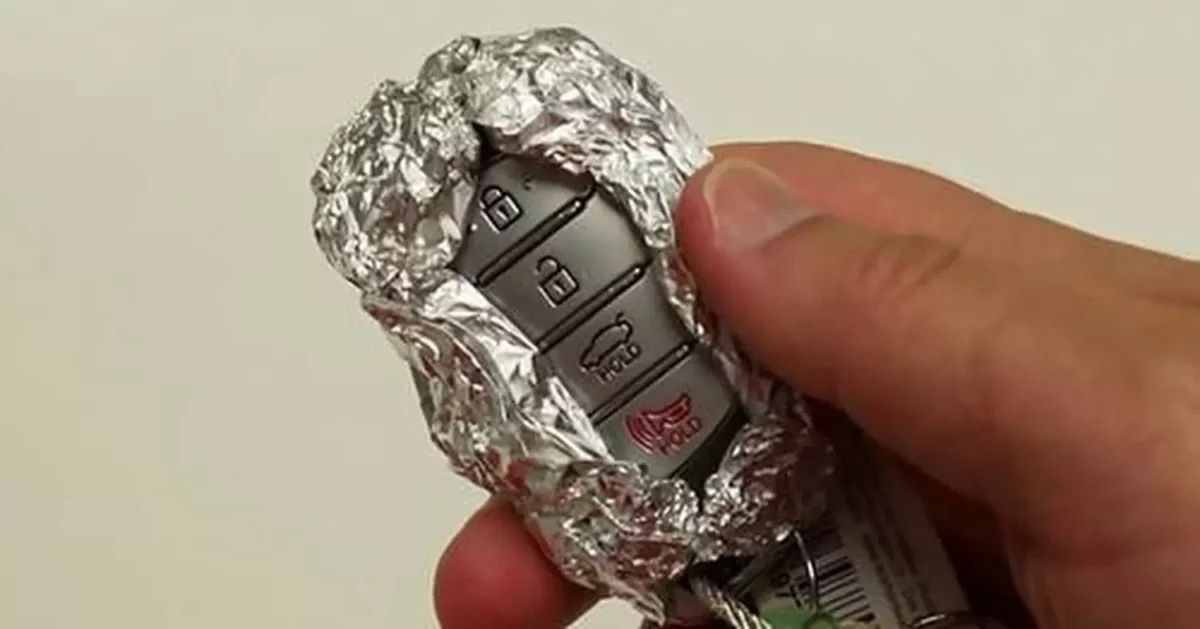Show table of content Hide table of content
In an era where car theft techniques have become increasingly sophisticated, drivers are turning to unconventional methods to protect their vehicles. One such method that has gained traction is wrapping car keys in aluminum foil. This simple yet effective technique is becoming a go-to solution for security-conscious drivers looking to safeguard their vehicles from tech-savvy thieves.
The evolution of car security threats
As automotive technology advances, so do the methods employed by car thieves. Modern vehicles are equipped with keyless entry systems and wireless key fobs, which offer convenience but also present new vulnerabilities. These systems rely on radio frequency (RF) signals to communicate between the key and the car, allowing for easy access and ignition.
Unfortunately, criminals have developed devices capable of intercepting and replicating these RF signals. This technique, known as a “relay attack,” enables thieves to:
- Capture the signal from a key fob inside a home
- Amplify and transmit it to an accomplice near the car
- Unlock and start the vehicle without physical access to the key
The ease with which these attacks can be executed has left many car owners feeling vulnerable and searching for effective countermeasures.
Aluminum foil as a protective shield
Enter the aluminum foil solution. This low-tech approach to a high-tech problem is based on the principle of a Faraday cage. Named after the 19th-century scientist Michael Faraday, this concept involves using a conductive material to block electromagnetic fields.
When a car key is wrapped in aluminum foil, it creates a makeshift Faraday cage that significantly attenuates the RF signals emitted by the key. This attenuation makes it much more difficult for potential thieves to intercept and replicate the signal, thereby adding an extra layer of security to your vehicle.
The effectiveness of this method has led to its increasing popularity among drivers. Much like how TikTok trends like the Orange Peel Test Theory gain traction, this simple security hack has spread through word-of-mouth and social media.
Implementing the aluminum foil technique
Adopting this security measure is straightforward and cost-effective. Here’s a step-by-step guide to properly wrap your car key:
- Cut a piece of aluminum foil large enough to completely envelop your key fob
- Wrap the key fob tightly, ensuring no part is exposed
- For added protection, use multiple layers of foil
- Store the wrapped key in a safe place when not in use
It’s important to note that while this method is effective, it’s not foolproof. Drivers should still exercise caution and employ other security measures in conjunction with the aluminum foil technique.
Additional benefits and considerations
Beyond theft prevention, wrapping car keys in aluminum foil offers other advantages. It can help preserve battery life by preventing the key from constantly searching for the vehicle’s signal. This is particularly useful when storing spare keys or during long periods of inactivity.
It’s worth noting that some manufacturers are developing built-in solutions to address these security concerns. However, for those with older models or seeking an additional layer of protection, the aluminum foil method remains a viable option.
A broader perspective on vehicle security
While the aluminum foil technique is gaining popularity, it’s essential to view it as part of a comprehensive approach to vehicle security. Layered security measures provide the best protection against theft. Here are some additional steps drivers can take:
- Install a steering wheel lock or pedal lock
- Use a GPS tracking device
- Park in well-lit, high-traffic areas
- Consider installing an aftermarket alarm system
Moreover, staying informed about the latest security threats and technological advancements in the automotive industry is crucial. Just as travelers use platforms like Couchsurfing to find safe accommodations, drivers should seek out and share information on vehicle security best practices.
In conclusion, the trend of wrapping car keys in aluminum foil is more than just a quirky habit; it’s a practical response to evolving security challenges. As car thieves become more technologically adept, drivers must adapt their security strategies. This simple yet effective method demonstrates that sometimes, low-tech solutions can be the answer to high-tech problems. By combining this technique with other security measures and staying vigilant, drivers can significantly reduce the risk of car theft and enjoy greater peace of mind.



I believe you mean “replay” not “relay” when you use the term “relay attack”.
Also, I’m not sure about the claims of battery life savings, at least not with the type of key fob shown. That is essentially a transmitter that uses no power until you press a key.
There are also some instances in the article where “key fob” and “key” are used interchangeably as the object that gets wrapped.